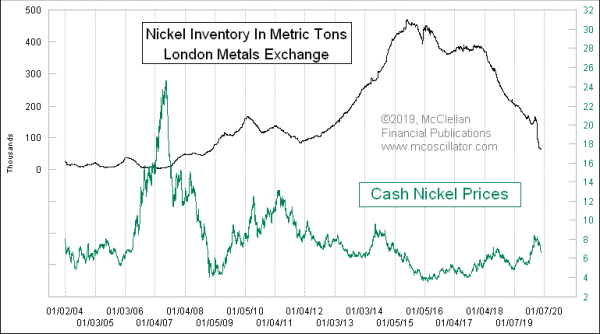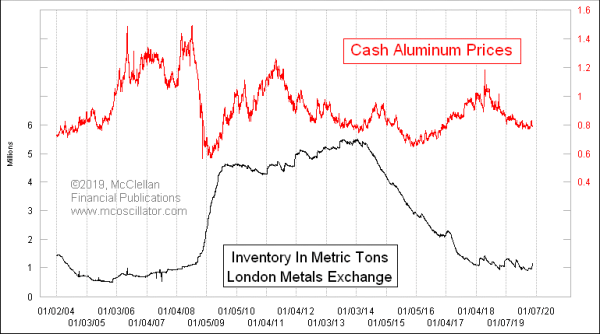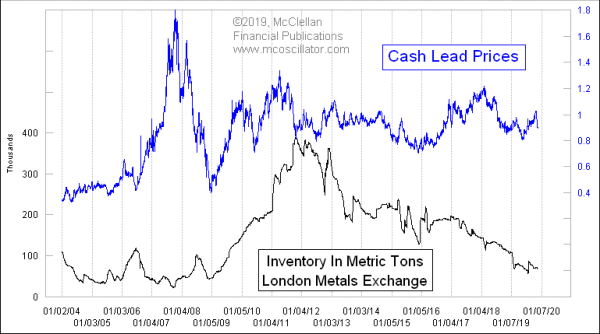
The conventional wisdom holds that the trade disagreements between the USA and China are going to lead to low GDP growth - or perhaps even a mini-recession - in early 2020. That belief makes some sense, since tariffs are proven to be a hindrance on economic activity.
But what if the belief is oversubscribed? That seems to be the case with this week's chart, which looks at the inventory levels of nickel in the London Metals Exchange warehouses. Warehouse stocks peaked at 470,000 metric tonnes back in 2015, and now they are down to just 67,000 tonnes. That is another way of saying that nickel producers think that the current price is a great price at which to sell, and so they are liquidating their accumulated inventories.
Normally, commodities producers are pretty smart and know their markets well. So, when they are liquidating, it is akin to when the explosives expert starts running - - you might want to try to keep up. But, at some point, that sort of flight can go too far, and we may be seeing just such a condition right now. The rapid drop in inventory levels sets up the potential for a squeeze in the nickel market. If there were to be any sort of supply disruption, there are not the warehouse stocks now like there were even a few months ago to cover that shortfall.
Nickel is an industrial metal, used to make some grades of stainless steel as well as to make other alloys stronger. It is also used in some newer battery technologies, such as nickel-metal-hydride and nickel-cadmium batteries. So, as industrial activity waxes and wanes, so do the prices for nickel.
The message of tightening nickel supplies is also echoed in the aluminum market.

LME inventory levels of aluminum have been falling for even longer than nickel inventories and are now down to a similar level to the one that led to a big rise in aluminum prices back in 2005. That does not mean the same thing has to happen this time, but the potential for a squeeze is there.
Here is one more chart of an often overlooked industrial metal: lead.

Its inventory levels have been falling for even longer, going back all the way back to 2011, even as prices have remained relatively stable. It offers the same point, that being that if there were a sudden global upsurge in economic activity, which increases the demand for these industrial metals, there is not now the same level of inventory to cushion that prospective demand surge, if it appears. The deeper question is that if that prospective demand surge does appear, triggering a supply squeeze, will the Federal Reserve be able to manage the inflationary implications appropriately, or will they screw things up (again)?
